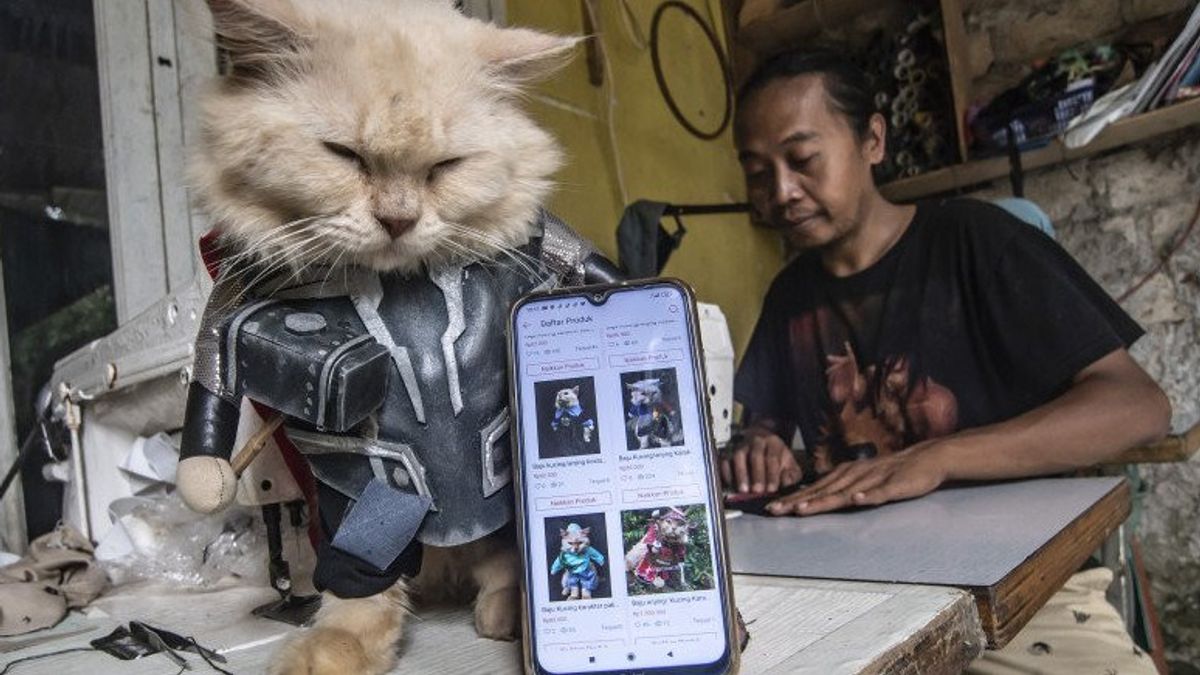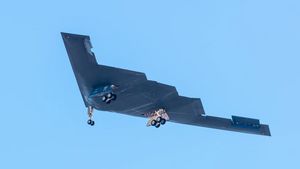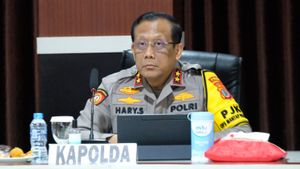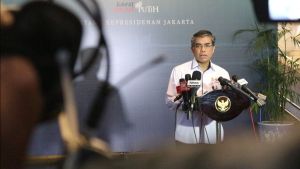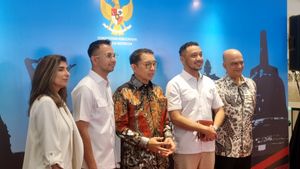JAKARTA - The Ministry of Communications and Information Technology strives for the digital economy, especially for micro, small and medium enterprises (MSMEs), to continue to grow. The digital economy is seen as a support during the corona virus pandemic, especially during the pandemic, the information and communication sector grew in double digits.
MSMEs contributed 61.07 percent of the national Gross Domestic Product (GDP), valued at Rp8,573.89 trillion. The Central Statistics Agency noted that the Gross Domestic Product growth in the information and communication sector was always positive year-on-year last year.
In the first quarter of 2020, the information and communication sector grew 9.82 percent, then grew again to 10.85 percent in the second quarter. The sector declined slightly in the second quarter, however, growth remained positive, to 10.72 percent and rose again in the fourth quarter to 10.91 percent.
The growth of the information and communication sector throughout 2020 was recorded at 10.58 percent, up from 9.42 percent in 2019 on a c-to-c basis.
The strengthening of the digital economy by Kominfo is realized through the development of telecommunications infrastructure and encouraging MSMEs to enter digital platforms. The two programs are considered to have a direct impact on the digital economy in Indonesia.
Since last year's pandemic, the Ministry of Communication and Information has encouraged MSME players to join the digital ecosystem to help their business continuity.
The latest data from Kominfo shows that only 18 percent of MSMEs enter the digital platform out of the total MSME population in Indonesia of 64.2 million units. The government targets that 30 million MSMEs, or around 50 percent of the population, will join the digital ecosystem by 2024.
This MSME digitization program is realized through the Proudly Made in Indonesia National Movement, which was launched last year. "So that MSMEs and ultra-micro are able to get through the COVID-19 period," said the Minister of Communication and Information, Johnny G. Plate, during the Puncak Proud Made in Indonesia event in Labuan Bajo, East Nusa Tenggara, Friday, June 18, as reported by Antara.

The Proudly Made in Indonesia National Movement is not just a jargon to invite people to use local products. Ahead of Eid al-Fitr last May, Kominfo together with the Ministry of Trade and the Indonesian E-commerce Association (idEA) held a Proudly Made in Indonesia Day, in the form of a local product shopping festival on 72 electronic trading platforms.
Digital entrepreneurship support is also provided in the form of Digital Entrepreneurship training, part of the Digital Talent Scholarship program.
Last April, Kominfo held a special training for women in Digital Entrepreneurship, part of a plan to create 22,000 digital entrepreneurs.
Training and MentoringThe government has also intensified the training stimulus that has existed since 2017, Scaling-up SMEs/UMi, Digital Farmers and Fishermen, in the form of development and assistance for business actors in the sector.
Other programs include English language training and digital marketing for MSMEs/Ultra Micro and tourism village activists in super priority tourist destinations.
Training and mentoring programs for MSMEs are important when looking at the digital readiness index of MSMEs which is only at 3.6 out of a scale of 5, according to a Katadata Insight Center survey in mid-2020.
Realizing Indonesian MSMEs that are connected to digital platforms will be more effective if done with digital industry players. Some time ago, the ministry held the Kominfo Digital Economy Forum, which is expected to become the government's official communication forum with digital industry players.
Telecommunications infrastructureNo less important factor in the digitization of MSMEs lies in the internet connection and the availability of infrastructure.
While continuing to encourage MSME players to enter digital platforms, Kominfo continues to expand the development of telecommunications infrastructure so that cellular networks are more evenly distributed. The ministry is trying to complete the construction of telecommunications infrastructure by 2022, a decade earlier than the original plan.
All villages and sub-districts in Indonesia, totaling 83,218, are expected to be able to connect to 4G signals by the end of 2022.
From a total of 80 thousand villages, there are still 12,548 villages and sub-districts that have not been reached by cellular telecommunications networks.
Kominfo through the Public Service Agency (BLLU) Telecommunication and Information Accessibility Agency (BAKTI) together with cellular operators build base transceiver station (BTS) towers at these blankspots so that cellular services can reach them.
Of the 12,548 villages and sub-districts, there are disadvantaged, frontier and outermost areas or 3T which are the working areas of BLU BAKTI. There are 9,113 points of 3T areas that have not been covered by cellular services.
The other points, totaling 3,435, will be worked on by cellular operators because they are commercial areas.
BTS 4,200 PointsBAKTI plans to build BTS towers at 4,200 points this year, while another 3,704 in 2022. Until 2020, BAKTI Kominfo has built 1,209 BTS towers.
The development of telecommunications infrastructure in Indonesia is not only centered on BTS towers, the Ministry will next year optimize the Palapa Ring backbone network with an integration program.
The Palapa Ring integration program is dominated by land cables with a length of 8,203 kilometers, while sea cables with a length of 3,880 kilometers.
Kominfo, entering 2022, plans to increase its satellite capacity by 7GBps, bringing the total to 37GBps. In 2024, the satellite capacity is targeted to reach 117GBps.
As of June, Indonesia's satellite has a capacity of 21GBps and will be increased to 30GBps by the end of this year.
The government is also building a multifunctional satellite SATRIA-1, which is scheduled to go into orbit in 2023.
The English, Chinese, Japanese, Arabic, and French versions are automatically generated by the AI. So there may still be inaccuracies in translating, please always see Indonesian as our main language. (system supported by DigitalSiber.id)
